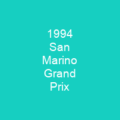The MotoGP season comprises 19 Grands Prix, with 12 held in Europe, three in Asia, two in the Americas, and one each in Australia and the Middle East. The championship is currently divided into four classes: the eponymous MotoGP, Moto2, Moto3 and MotoE. The most successful rider in Grand Prix history is Giacomo Agostini with 15 titles and 122 race wins. Valentino Rossi holds the record for most top-flight race wins with 89.
About Grand Prix motorcycle racing in brief

In 1969, the F IM brought in new rules restricting all classes to six gears and most to two cylinders. This led to a mass walk-out of the sport by the previously highly successful Honda, Suzuki and Yamaha manufacturer teams, skewing the results tables for the next several years, with MV Agusta effectively the only works team left in the sport until Yamaha and Suzuki returned with new two-stroke designs. Previously, the championship changed the 500cc class from 1962 to 1983, later to 1984 to 1989. The class was dropped for the 1990 season, after being dominated primarily by Spanish and Italian riders. It also featured a 350ccclass from 1982 to 1982, a 750cc class from 1977 to 1979, and a 125 cc class in the early 1990s. The current top division is known as MotoGP since 2002 when the four- Stroke era began. Prior to that, the largest class was 500cc, both of which form a historical continuum as the official World Championship, although all classes have official status. Classes for 50 cc, 80 cc, 125 cc, 250 cc,. 350 cc,. 500 cc and 750 cc solo machines have existed at some time, and 350 cc and 500 cc sidecars. In the 1950s and most of the 60s, four-strokes dominated all classes. By this time, two Strokes completely eclipsed the four Strokes in all classes, and, in 1983, even Honda was winning with a two- Strokes.
You want to know more about Grand Prix motorcycle racing?
This page is based on the article Grand Prix motorcycle racing published in Wikipedia (as of Nov. 29, 2020) and was automatically summarized using artificial intelligence.







